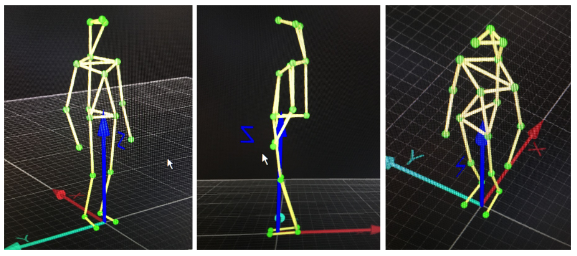Music makes us move with it, even when we try not to. Several factors are in play, but the tempo is particularly important.

It is almost impossible for the human body to stand still. We make constant, tiny and almost invisible body movements, also called micro movements, according to research from the University of Oslo. These movements intensify while listening to music.
In her PhD, Agata Zelechowska investigated which kinds of music have the strongest effect on such spontaneous human movement.
"Based on previous studies, we assumed that music with a tempo of around 120 beats per minute (BPM) is most likely to make us move. This is indeed what we found in our studies," Zelechowska, researcher within music psychology, said.
"It's my life" and "Bad Romance"
Former research has suggested that 120 BPM is the preferred tempo for dancing. Perhaps it makes sense, when thinking of songs such as Bon Jovi's "It's my life", Cyndi Lauper's "Girls just want to have fun", and Lady Gaga's "Bad Romance".
"120 BPM is also a spontaneous tempo for tapping for most people, and the average tempo of human walking," Zelechowska said.
Humans' average walking tempo is around two steps a second, adding up to 120 steps a minute, she explained.
Zelechowska worked closely with professor Alexander Refsum Jensenius and postdoc Victor Evaristo Gonzalez Sanchez, all at RITMO Centre for Interdisciplinary Studies in Rhythm, Time and Motion, University of Oslo.
One of their ideas was to organize championships where the person that moved the least would win a gift card worth NOK 1.000 (approximately 95 euros). They used an infrared camera system to capture the participants' body movement.
Seven minutes of standing still

The research group concluded that humans are simply unable to stand completely still. The head moves several millimetres per second, and significantly more while listening to music. Head movement tells a lot about balance and body sway, according to Zelechowska.
When researching tempo and movement, the researchers asked around 100 participants to stand as still as possible for seven minutes. During that time, there was a mixture of silence, simple drumbeats, and complex drum rhythms.
As found in previous championships, participants were not able to stand completely still, and listening to rhythms increased their movement. The researchers found most movement for rhythms at a tempo of 120 BPM.
Listen to the sound that induced most movement
Mother's womb
The reasons behind this finding are still unknown.
"One theory is that we become sensitive to it when we are in our mother's womb, by listening to her heartbeat and walking movements," Zelechowska said.
This idea has a long history, and in the eighties it was highlighted by Richard Parncutt, one of the leading figures in research on music psychology.
A second theory is that humans are sensitive to this tempo simply because they walk quite a lot.
"Everybody walks, given that they are physically able to do it. Repeating the same type of movement daily perhaps makes you more sensitive to the tempo of this movement. In addition, as Matz Larsson, a researcher at Lund University, points out, you constantly listen to your own footsteps. That too can result in a preference for the rhythmic sounds at this tempo."
A regular rhythm

The motor areas of the brain, which control human movement, seem to play an important role.
According to past research, these areas activate while listening to rhythmic music. Zelechowska suggested that the brain could have a greater sensitivity to music of a certain tempo.
Another finding by Zelechowska and her team is that music needs a regular rhythm in order to induce spontaneous movements. Telespringar is Norwegian folk music with an irregular rhythm, and this music did not induce significantly more movement than silence did. On the other hand, electronic dance music with its consistent beat did.
The importance of empathy
All humans make micro movements, but the responsivity to music differs from person to person. So which traits make people more susceptible to the effects of music? Should you be a concert person, a dancer, or perhaps an extrovert?
Zelechowska examined a broad range of variables, and the one that turned out to be most important, was empathy.
"It was a quite surprising finding. I had expected other factors to be more or at least equally important as empathy. For example, I thought extroverted people would be moving more than others," she said.
The latter was found by Geoff Luck and his co-researchers at the University of Jyväskylä in Finland, when analysing recordings of people dancing to music. They linked extroversion to faster movements and high amounts of movement in general.
Music as a signal
Still, Zelechowska found the apparent importance of empathy to make sense.
"If we consider music as a sort of signal made by humans, it does make sense that empathic people react stronger," she said.
She also linked the finding to previous research suggesting that empathic people are better at synchronizing movements in dance, with others as well as alone.
Zelechowska and her co-researchers write that it is too early to draw firm conclusions about empathy and the urge to move to music. In addition, the importance of a 120 BPM tempo for inducing movement needs further confirmation. However, they have gathered evidence that it indeed can be irresistible to move to music.
"In former studies, researchers often studied peoples' movements while asked to move however they want. We have asked people to stand still. We have shown that movements occur spontaneously, and that it is very hard not to move at all," Zelechowska said.
References
Zelechowska, A., Sanchez, V. G., & Jensenius, A. R. (2020). Standstill to the 'beat' differences in involuntary movement responses to simple and complex rhythms. In Proceedings of the 15th International Conference on Audio Mostly (pp. 107-113).
Parncutt, R. (1987). The perception of pulse in musical rhythm. Action and perception in rhythm and music, 55, 127-138.
Larsson, M. (2014). Self-generated sounds of locomotion and ventilation and the evolution of human rhythmic abilities. Animal cognition, 17(1), 1-14.
Larsson, M., Richter, J., & Ravignani, A. (2019). Bipedal steps in the development of rhythmic behavior in humans. Music & Science, 2, 2059204319892617.
Luck, G., Saarikallio, S., & Toiviainen, P. (2009). Personality traits correlate with characteristics of music-induced movement. In ESCOM 2009: 7th Triennial Conference of European Society for the Cognitive Sciences of Music.
Luck, G., Saarikallio, S., Burger, B., Thompson, M. R., & Toiviainen, P. (2010). Effects of the Big Five and musical genre on music-induced movement. Journal of Research in Personality, 44(6), 714-720.
Gonzalez-Sanchez, V. E., Zelechowska, A., & Jensenius, A. R. (2018). Correspondences between music and involuntary human micromotion during standstill. Frontiers in psychology, 9, 1382.
Zelechowska, A., Gonzalez Sanchez, V. E., Laeng, B., Vuoskoski, J. K., & Jensenius, A. R. (2020). Who Moves to Music? Empathic Concern Predicts Spontaneous Movement Responses to Rhythm and Music. Music & Science, 3, 2059204320974216.
Bamford, J. M. S., & Davidson, J. W. (2019). Trait Empathy associated with Agreeableness and rhythmic entrainment in a spontaneous movement to music task: Preliminary exploratory investigations. Musicae Scientiae, 23(1), 5-24.
Carlson, E., Burger, B., & Toiviainen, P. (2019). Empathy, Entrainment, and Perceived Interaction in Complex Dyadic Dance Movement. Music Perception, 36(4), 390-405.






